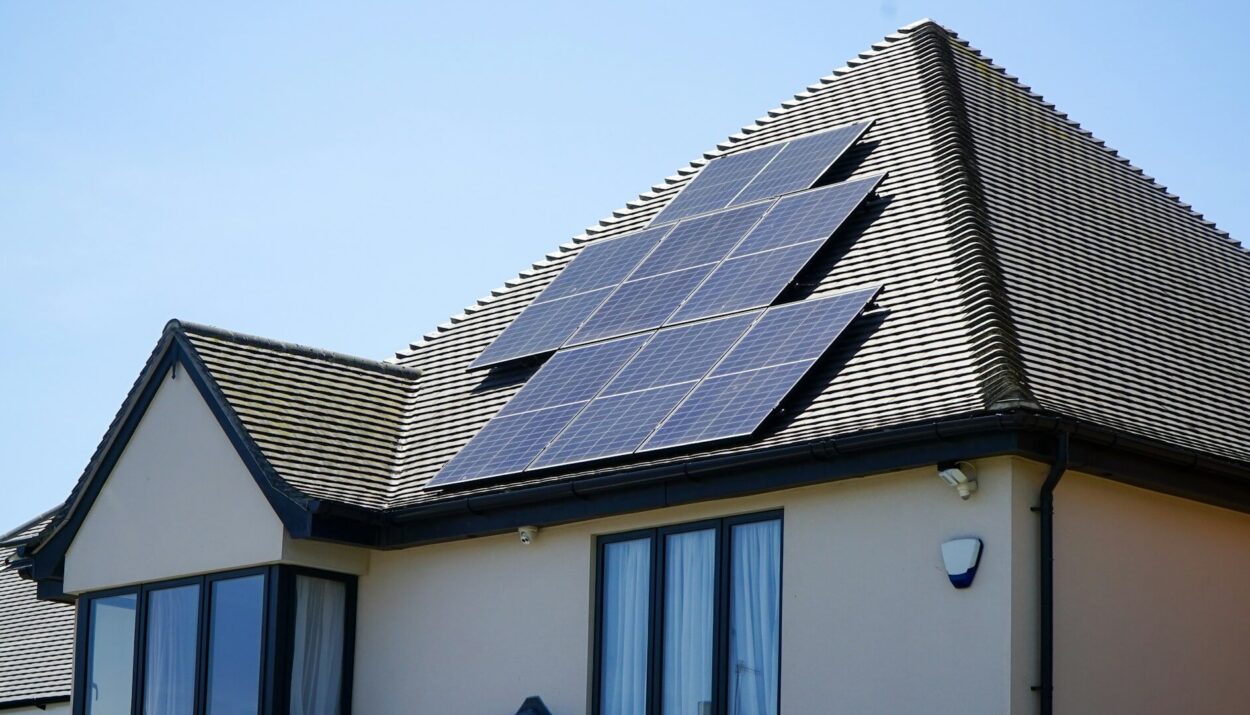The intersection of technology and sustainability has become ground zero for some of the most exciting advancements in recent years. From solar-powered cars to high-efficiency wind turbines, innovations in green technology are forging a path toward a more sustainable future.
Each breakthrough brings us closer to the ideal of a greener, cleaner world but what are these innovations, and how are they affecting our everyday lives and the planet? In this extensive blog post, we’ll explore the latest in green tech and its impact on our environment and economy.
Harnessing the Power of the Sun: Solar Innovations
Beyond the Panel: Solar Tiles and Textiles
When we think of solar power, images of rooftop panels and vast fields of photovoltaics often come to mind. While these are essential components of our renewable energy infrastructure, new solar innovations are taking these concepts a step further.
Solar shingles, also known as solar roof tiles, blend traditional roofing materials with high-efficiency solar cells, providing a sleek and seamless way to generate power. Similarly, solar textiles integrate solar technology into fabric, which can be used in everything from outdoor gear to fashionable clothing, allowing wearers to charge their devices on the go.
Advances in Solar Efficiency and Storage
Historically, one of the challenges of solar power has been intermittent supply due to weather conditions. However, advancements in storage solutions, such as next-generation lithium-ion batteries and even all-iron flow batteries, are providing more reliable access to stored solar energy.
Researchers are also pushing the boundaries of solar panel efficiency, with some experimental designs surpassing 30% efficiency. These breakthroughs are making solar power more cost-effective and contributing to the decentralization of energy production, enabling consumers to be both producers and storers of solar power.
The Power of the Wind: Innovations in Wind Energy
The Rise of Offshore Wind Farms
While onshore wind farms have been a staple of the renewable energy landscape, offshore wind farms are quickly gaining ground (or rather, sea) as a powerful and underutilized resource. The winds at sea are steadier and blow more consistently, making offshore turbines both more efficient and more predictable.
The latest designs are not only larger and more powerful but also take into account the harsh marine environment, including saltwater-resistant materials and innovative maintenance protocols. This expansion into offshore territories is opening up vast new areas for sustainable energy production.
Bladeless Wind Turbines and Other Wind Innovations
Innovations such as bladeless wind turbines are challenging the status quo of wind power. These designs use a different physical principle to capture energy, reducing the need for materials and potentially lowering the ecological impact.
Additionally, bladeless turbines are safer for birds and bats, which is a significant consideration for environmental impact assessments.
Another exciting area is airborne wind energy, which uses kites or drones to harness wind at higher altitudes, where it is stronger and more consistent. Startups are testing various tethered and autonomous systems that promise to further increase the efficiency and effectiveness of wind power.
Electric Dreams: The Evolution of Clean Transportation
Electric Vehicles (EVs) and Their Adoption
The shift towards electric vehicles (EVs) is one of the most visible signs of technological progress in the fight against climate change. Major automobile manufacturers and startups alike are investing heavily in EV technology, leading to a rapidly expanding market and increasing consumer adoption.
Not only are EVs cleaner than their internal combustion engine (ICE) counterparts, but they also offer the potential for energy independence and improved air quality in urban areas. With advancements in battery technology, EV ranges are increasing, and charging times decreasing, making electric vehicles more practical for a wider range of consumers.
Sustainable Transportation Systems
The development of more sustainable transportation extends beyond personal cars. Public transportation systems are also undergoing a green revolution, with advances in electric buses, trains, and even ferries that are powered by renewably sourced electricity or, in some cases, onboard hydrogen fuel cells.
City planners are also exploring innovations in transportation infrastructure, such as roadways that can charge vehicles as they drive over them (inductive charging) and the expansion of bike-sharing programs, further reducing the carbon footprint of urban environments.
Smartening Up Our Infrastructure: Green Building Technology
The Rise of Green Smart Homes
Smart home technology is becoming increasingly intertwined with sustainability. From energy monitoring systems that help residents understand and reduce their energy consumption to appliances that can be programmed to use energy during off-peak times, smart homes are playing a crucial role in the effort to reduce our environmental impact.
Add to this the incorporation of sustainable materials, energy-efficient HVAC systems, and advanced building monitoring and control technologies, and the result is a new wave of green, intelligent home design that provides comfort, convenience, and conscience.
High-Tech Innovations in Commercial Construction
The principles that make smart homes greener are also being employed in commercial construction. Green building practices, like LEED and BREEAM certifications, are integrated into the design and construction of high-tech office buildings, shopping centers, and industrial sites.
Innovations such as kinetic energy harvesting floors, transparent solar panels for windows, and advanced insulation materials contribute to more sustainable buildings that are in harmony with their surrounding ecosystems. On a larger scale, smart building technologies enable greater control and optimization of energy use, reducing waste and lowering operational costs.
The Internet of Things (IoT) and Sustainability
IoT and Energy Management
The Internet of Things (IoT) is a key player in the bid for a sustainable future. Smart sensors and connected devices allow for more precise monitoring and control of energy use, both in domestic and industrial settings.
From smart thermostats that learn a household’s heating and cooling needs to industrial IoT systems that optimize manufacturing processes, the potential for energy savings is significant.
IoT also plays a crucial role in the development of smart grids, which help balance the supply and demand of energy, integrate renewable sources, and reduce the risk of blackouts. These technologies enable a more resilient and efficient energy infrastructure that is better equipped to handle the challenges of the 21st century.
IoT and the Circular Economy
The circular economy aims to reduce waste and prioritize the continual use and recycling of resources. IoT technologies are instrumental in achieving this goal, by enabling more efficient sorting and recycling processes, as well as creating ‘smart’ products that can be maintained and upgraded rather than being disposed of.
Connected devices also facilitate the sharing and collaborative consumption of products, leading to a reduction in resource consumption. By tracking the lifecycle of products, IoT helps to close the loop on waste and manage resources more intelligently.
The Road Ahead: Challenges and Potential
The Role of Policy and Regulation
Despite the significant strides made in green tech, policy and regulation play a crucial role in shaping its future. Subsidies, tax incentives, and strict environmental standards can accelerate the adoption of clean technologies and hold polluters accountable.
International agreements like the Paris Accord signal a global commitment to combating climate change, but the success of such agreements depends on the actions of individual countries and the support of their citizens. Innovation in green tech must be coupled with thoughtful policy to create an ecosystem that supports and funds these new technologies.
Access and Equity in Green Technology
One of the challenges of green technology is ensuring that its benefits are accessible to all. From a global perspective, ensuring equitable access to sustainable technologies is a complex issue that requires innovative solutions and international cooperation.
At a local level, it is essential to address the digital divide and ensure that all communities have access to the opportunities that green technology presents. This involves not only providing the necessary infrastructure but also investing in education and training to empower individuals to make the most of these technologies.
Conclusion
Green technology is not just an environmental imperative; it is also a powerful driver of innovation and a source of new economic opportunities. The examples presented in this post offer a glimpse into the exciting developments that are shaping our world and our future.
By harnessing the power of the sun, the wind, and the latest in digital connectivity, we can create a world that is not only technologically advanced but also sustainable and resilient.
The road ahead may be fraught with challenges, but with the commitment of the global community and the ingenuity of our brightest minds, the promise of a green future is within our reach.
For businesses, entrepreneurs, and policymakers, the message is clear: green technology is not just a niche market but the future of industry and commerce. Investing in sustainable innovation today will pay dividends in terms of environmental stewardship and economic growth tomorrow.
In conclusion, the narrative of green tech continues to evolve, presenting us with endless opportunities to build a better world. Our engagement with these innovations, as consumers, advocates, and custodians of the planet, will define the success of our collective endeavor to create a sustainable future.





